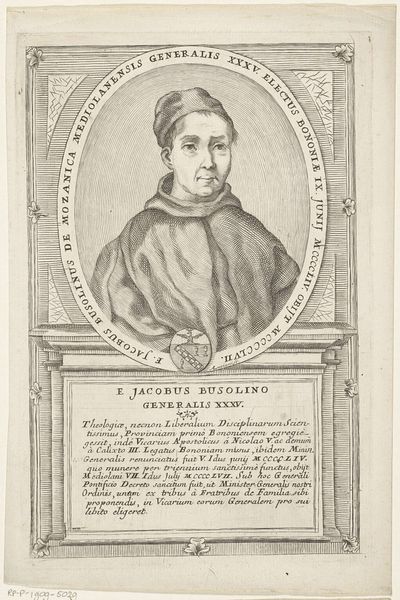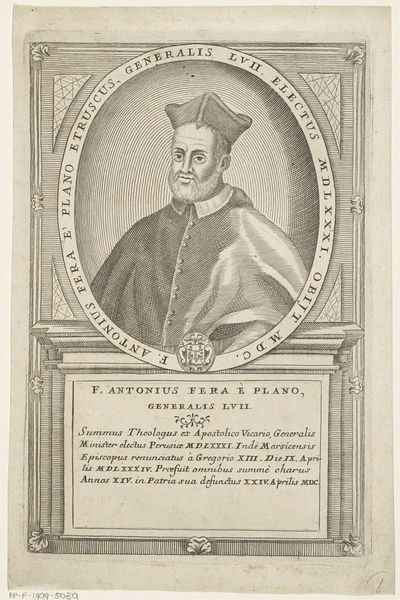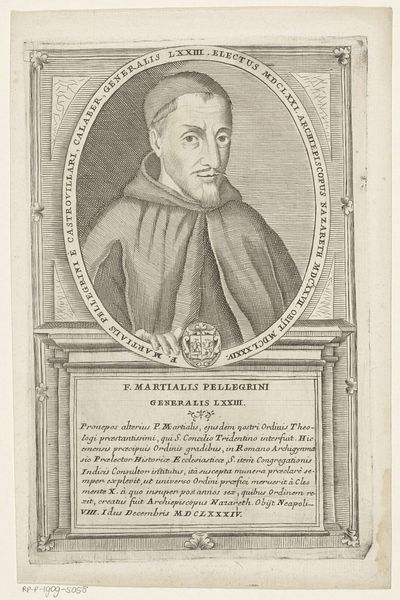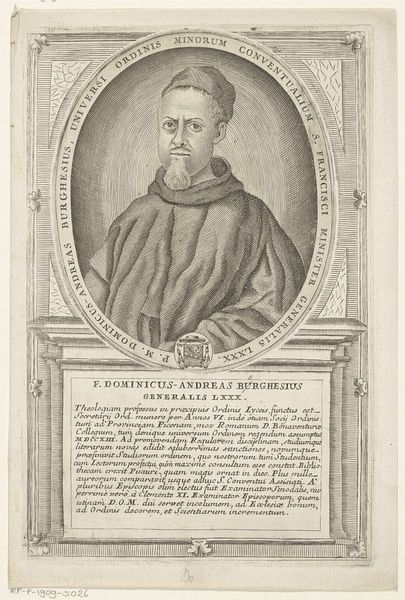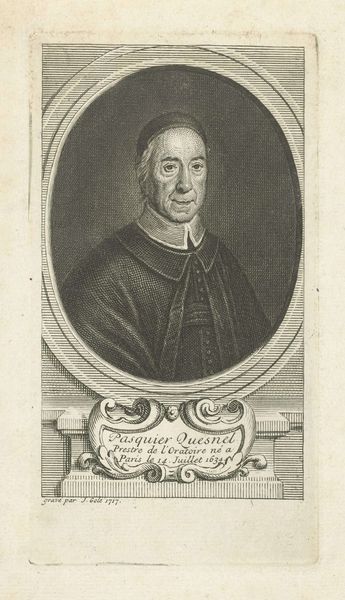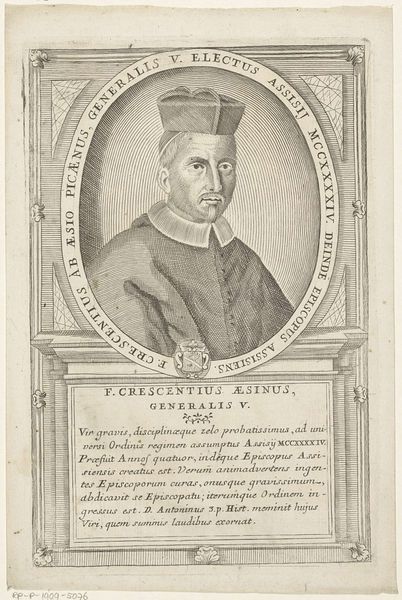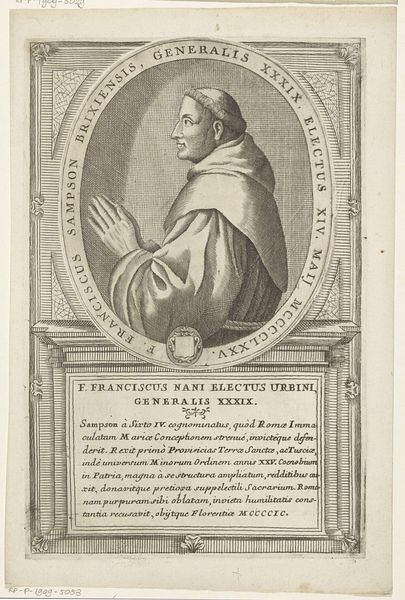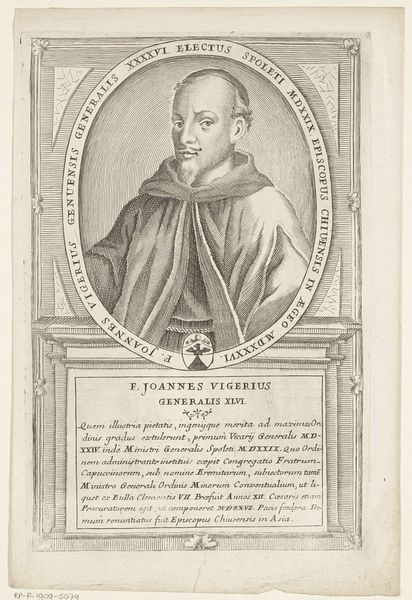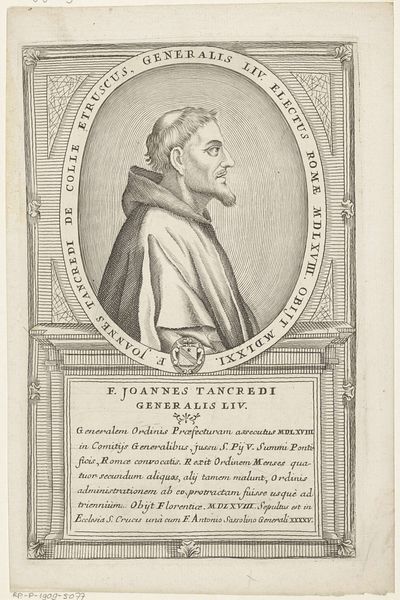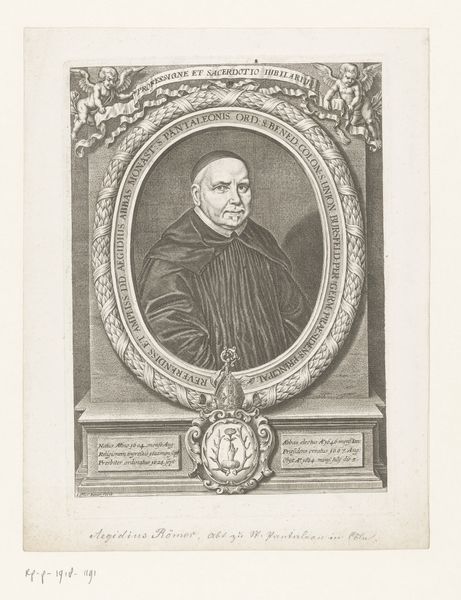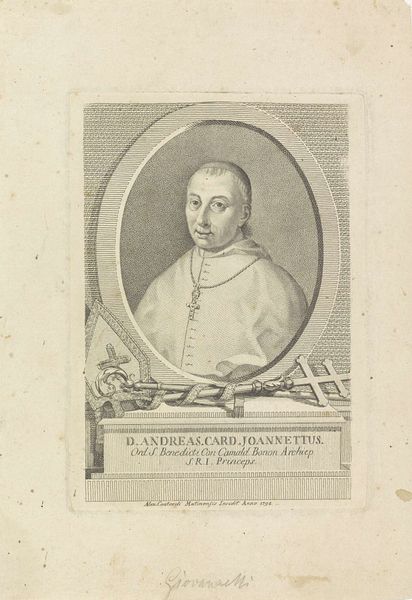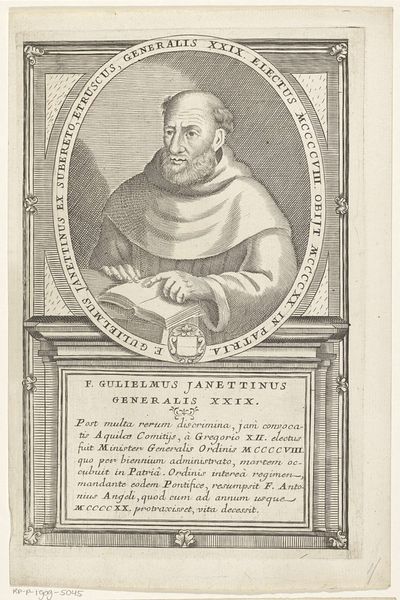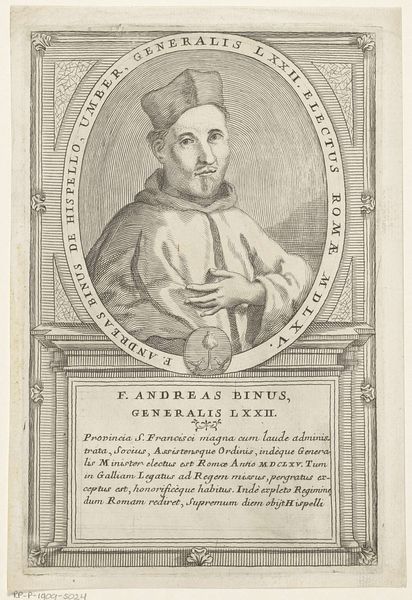
Portret van Evangelista Pellei, 59ste Minister Generaal van de franciscaner orde 1710 - 1738
0:00
0:00
#
pencil drawn
#
aged paper
#
toned paper
#
light pencil work
#
parchment
#
pencil sketch
#
old engraving style
#
personal sketchbook
#
19th century
#
pencil work
Dimensions: height 248 mm, width 159 mm
Copyright: Rijks Museum: Open Domain
Curator: Looking at this engraving, we see "Portret van Evangelista Pellei, 59ste Minister Generaal van de franciscaner orde" - Portrait of Evangelista Pellei, 59th Minister General of the Franciscan Order, created sometime between 1710 and 1738 by Antonio Luciani. Editor: My first impression is of a rather formal, even severe, depiction. The tight framing, the stern expression... it feels very much like an official, carefully constructed image intended to convey authority. Curator: Exactly. These kinds of portraits were vital tools for religious orders. Think about how this image reinforces the power and legacy of the Franciscan Order through its representation of Pellei. His position, his role, are all communicated in the inscription surrounding the portrait, too. Editor: Right, and what's really interesting is how this relates to notions of power during that era. A figure like Pellei wasn't just a religious leader; he likely wielded significant social and political influence. Seeing the trappings of religious imagery underscores that complex interplay. How was he received then? Did they consider the way the images came across to everyday citizens or was the target audience more limited? Curator: Those questions are precisely the kinds of historical context we need. Consider the political and religious climate of the 18th century. This wasn’t just a simple likeness; it was a carefully constructed symbol designed to uphold the established order. His portrait would have reinforced his standing and his influence. The order's coat of arms in the bottom further drives that. Editor: It definitely gives a powerful sense of both individual and institutional might. And while the engraving technique lends itself to a certain austerity, it’s clear there’s attention to detail, an attempt to imbue him with a kind of stoic dignity. Curator: I see this engraving, in light of feminist thought and post-colonial studies, not just as a portrait but a representation of the structures and narratives of the powerful. Editor: Thanks. Thinking through that kind of broader history helped unpack the piece.
Comments
No comments
Be the first to comment and join the conversation on the ultimate creative platform.
